Golfer’s Elbow Surgery
What is a Golfer’s Elbow?
Golfer’s elbow is a condition associated with pain on the inside of the elbow where tendons of your forearm attach to the bony prominence (medial epicondyle). It is also called medial epicondylitis and is caused by injury or irritation to the tendons which can become painful and swollen.
Besides golf, activities such as baseball or lifting a heavy bag or suitcase may also cause medial epicondylitis, hence the terms “baseball elbow” and “suitcase elbow” are also used.
What are the symptoms?
Symptoms of Golfer’s elbow may include:
- Pain and tenderness on the inner side of the elbow, particularly when gripping objects or flexing the wrist.
- Stiffness and weakness in the affected arm, make it difficult to perform activities that involve bending the elbow or wrist.
- Swelling or inflammation around the elbow joint.
- Numbness or tingling sensation radiating down the forearm.
- Pain is worsened by activities such as swinging a golf club, lifting weights, or repetitive wrist movements.
How is golfer’s elbow Diagnosed?
Golfer’s elbow is typically diagnosed through a combination of medical history, physical examination, and diagnostic tests. Common methods of diagnosis may include:
- Assessment of symptoms, such as pain, tenderness, and limited range of motion.
- Physical examination, including tests to evaluate strength, flexibility, and stability of the elbow joint.
- Imaging studies, such as X-rays, MRI scans, or ultrasound, to visualize the soft tissues and assess the extent of tendon damage.
How to Treat golfer’s elbow?
Treatment options for golfer’s elbow may include:
- Rest and activity modification: Avoid activities that exacerbate symptoms and give the affected tendons time to heal.
- Ice therapy: Applying ice packs to the elbow to reduce pain and inflammation.
- Pain management: Over-the-counter or prescription medications, such as NSAIDs or corticosteroid injections, to alleviate pain and swelling.
- Physical therapy: Rehabilitation exercises to strengthen the muscles surrounding the elbow, improve flexibility, and correct biomechanical imbalances.
- Use of elbow braces or straps to relieve stress on the affected tendons.
Surgical treatment for golfer’s elbow:
Surgical intervention for golfer’s elbow is typically considered when conservative treatments fail to provide relief or in cases of severe tendon damage. Surgical procedures may include:
- Medial epicondyle release: Surgical release of the tight or damaged tendons around the medial epicondyle to relieve pressure and improve function.
- Tendon repair: Surgical repair of the torn or degenerated tendons, often using techniques such as tendon grafting or suture anchors.
- Arthroscopic debridement: Minimally invasive surgical removal of damaged tissue and debris within the elbow joint to alleviate pain and improve mobility.
What does the recovery process include?
Recovery from treatment for golfer’s elbow varies depending on factors such as the severity of the injury, type of treatment, and individual healing factors. Generally, recovery may involve:
- Immobilization of the elbow with a splint or brace immediately following surgery.
- Physical therapy or rehabilitation exercises to restore strength, flexibility, and range of motion of the elbow joint.
- Gradual return to activities and sports, following the guidance of healthcare providers and rehabilitation specialists.
- Full recovery may take several weeks to months, with some individuals requiring ongoing management to prevent recurrent symptoms or complications.
What are the potential risk factors and complications?
While surgical treatment for golfer’s elbow is generally safe, potential risks and complications may include:
- Infection at the surgical site.
- Bleeding or blood clots.
- Nerve or blood vessel injury.
- Persistent pain or stiffness.
- Delayed healing or recurrence of symptoms.
- Rarely, adverse reactions to anaesthesia or surgical complications.




